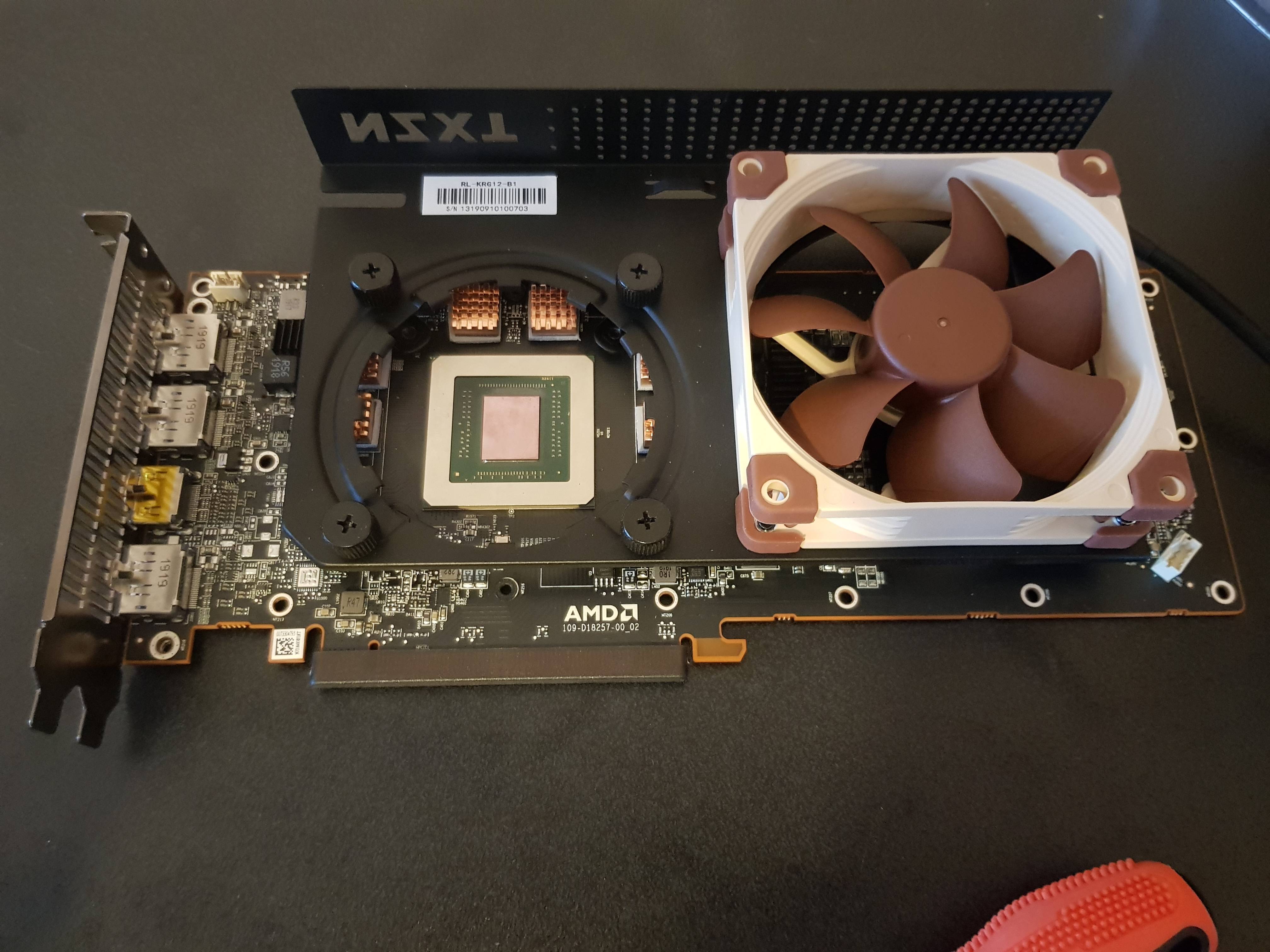Note: If you're using 5th gen Asetek AIO, and have some drilling or dremel tools already. I suggest not to buy any "GPU AIO bracket" for GPU mounting for 5700XT. Just take the Intel bracket in the AIO, drill proper mounting holes, grab some screw sets and it can work pretty good. Also, you don't need to read this post anymore.
---------------------------------------------------------------------------------------------------------------------------------------------------------------------------------------------
Since there's no longer overseas business travels, and I also live in somewhere pretty quite, the heat and noise of my laptop MSI GT72 become annoying. Even just playing This War of Mine, the fan runs crazy. So I turns back to desktop PC.
It's my first time using AMD+AMD setup, the cost of price (CP) is pretty good. But, still noisy while daily using or gaming. Then I give some budget to do a quieter and nearly the same cooling efficient as stock cooler. And all of the setup is base on my daily and gaming scenario, rather then push the hardware into limitation.
When I get these ML fans, it's really quiet. But it may generate some strange noise under some circumstances. No to dig this issue deep in this topic.
Then I got NZXT X62, Strix LC 240 RGB and Dark Rock Pro 4(DRP4) subsequently. I choose DRP4 for 3800X in the end.
The last part is my GPU, ROG Strix 5700XT OC. This is the main and hard part in my build, the 5700XT is really hot and the triple fans also loud when gaming. Here's the temps when I play Black Dessert Online(BDO).
GPU Tweak II set to silent mode, no OC.
P-Mode, fan RPM 2600. GPU temp 70, hotsot 76, VRAM 74, VRM 69.
Q-Mode, fan RPM 1600, GPU temp 82, hotsot 100, VRAM 90, VRM 90.
Manual fan to 500 RPM, GPU temp 100, hotsot 107, VRAM 102, VRM 97.
If you can accept the noise, the cooling performance is quiet good compare to the reference card.
I do some research that found the X62 can mount on GPU with NZXT G12. Then I mail to the NZXT customer service for asking the compatibility between G12, and 5700XT PCB. Here's the reply:
"Hello,
We have not done any official testing with the 5700xt and the g12 was designed before the existence of the gpu. However, we have seen many users using the g12 on the 5700xt cards just fine.
Although it is not a reference card is it a reference PCB at least? The best option would be to compare the PCB you have to other know working 5700xt PCB's and ensure the mounting holes are the same
Many cards either reference or non reference carry the same mounting specifications
AMD 5700xt

"
Base on this mail and the picture in the attachment, I bought the Kraken G12 immediately before doing any deep dig.
 |
| Actually, it's not align. |
 |
| Then I try to use zip ties, looks well. |
 |
| Add Noctua A9 and A6 for cooling VRM. |
 |
| Hold the card with paper strip. |
The craziest one I've seen is one guy drill and enlarge the mounting holes on 5700XT PCB. Actually it's not that dangerous, normally there's no signal trace go to the holding holes. They are connected to ground level.
Here comes the first test, it failed but pretty worthy for the result. All of the fan are auto controled. Chassis fans and VRM fans by AI SUITE, rad fans and pump by NZXT CAM.
Idle, rad fans RPM 433, GPU 35,Hotspot 37,VRAM 40,VRM 37.
BDO, rad fans RPM 433, GPU 58,Hotspot 109,VRAM 72,VRM 47.
Wait, what!? The hotspot almost hit the limitation! Then I check what hotspot temp stands for. It's the highest temp on the core, if the sensor can sensor it. It means my pump is not fully touch and press on the core or die, the zip ties are not work fine. If there's no hotspot or Tj, maybe I'll just let it go.
5700XT PCB has two mounting hole distance, 54x54mm and 64x64mm.
Kraken G12 AMD bracket provides 53x53mm, on the G12 it self provides 65x65mm(not official).
There's some other brackets in China market, one of them claim it can use on 52~62mm mounting holes. But again, the 5th gen Asetek pump is too big to perfectly fit every things. About the 5th gen pump, the diameter of copper part is around 55~56mm, the plastic part is 80mm.
Second test!
 |
| The top one is from China market, off-brand bracket, which is smaller. If you would like to use GPU riser, it will be a good choice |
 |
| The pump of X62 still too big to fit, so I cannot keep the stock frame on my GPU. |
 |
| In the end, I only use the screw set which comes with the off-brand bracket. |
 |
| I also want to add copper shim which extend the AIO cooling area to VRAM. |
 |
 |
| Put some thermal pad and paste, make sure the pump can touch the copper shim. |
 |
| Then I use G12 again, tiled screw everything and make sure the pressure is enough. Looks the same as first round test. |
Let's see if this new screws improve the temps.
These are the temps when idle. G12 is the first test, G12 mod is the second test.
This is the part when I play BDO over 15 mins. You can see the second test is really improve the hotspot temp, down to 83 when the fan and pump runs in silent mode. Still a bit high, but it's already good for me.
About the VRM, second test gets higher temps. I think that's because the hotspot hit the limitation in first test, the GPU clock frequency may be lower and then cause the VRM is not fully output.
Here's the FFXV benchmark (3840x2160 High quality, 2560x1440 High quality) and 10 mins Furmark (2560x1440 4xMSAA, I'm lazy to wait...) for comparison.
The VRAM temps goes extremely high when running Furmark.
The score of FFXV makes not much improvement than reference card (the 5700 XT board score).
I think the whole test is already meet my requirements, quieter and nearly the same cooling performance compare to stock cooler. The only issue I think is the VRAM temp, I don't have any idea how to deal with it. The thing is, it's not that high stress when I'm gaming, I'll just leave it for now. Maybe next time I'll try the full cover GPU watercool block.




























